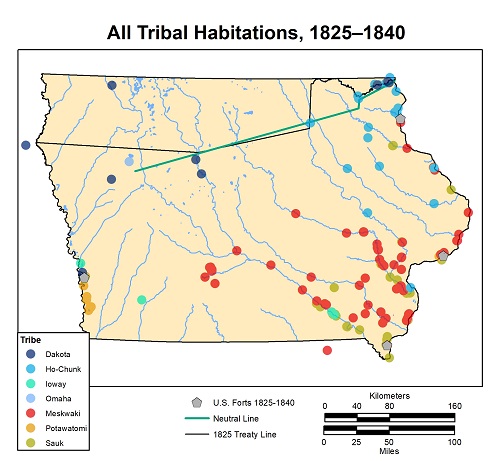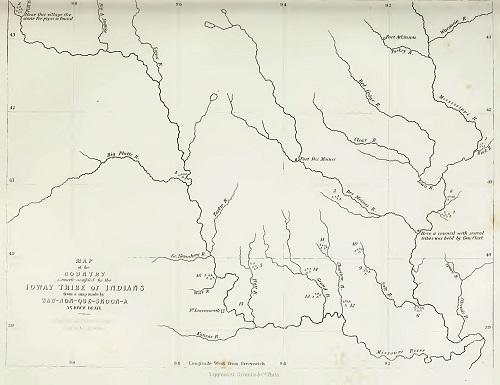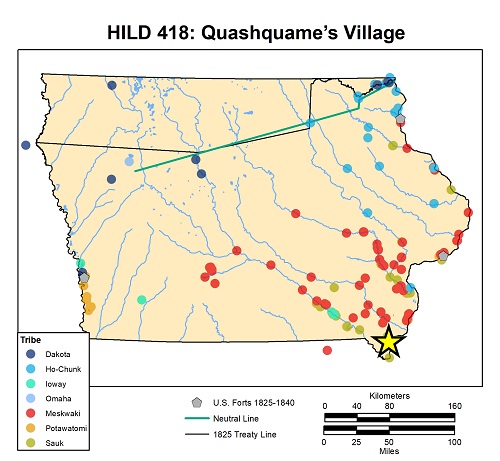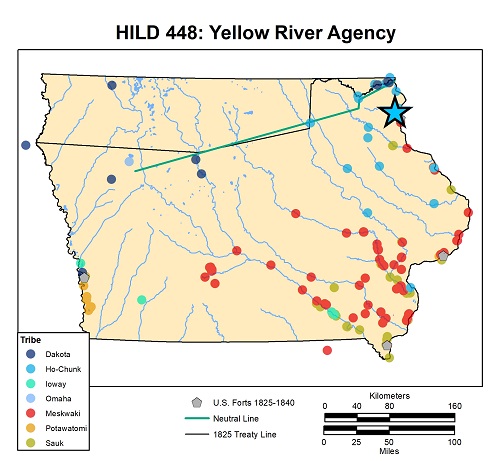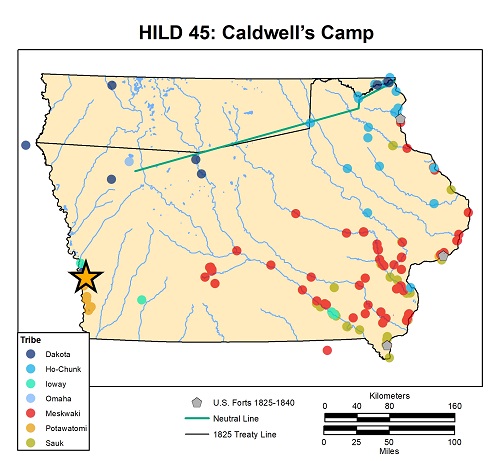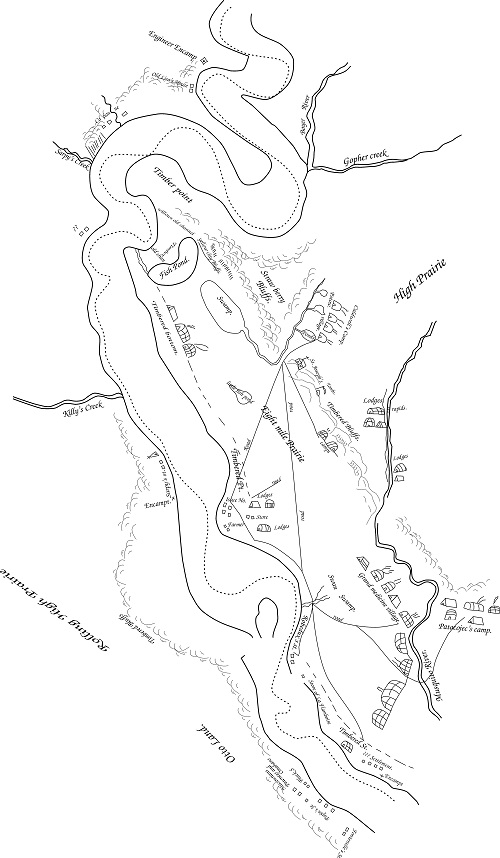1825 – 1840
Beginning in 1825 the main treaty boundary in Iowa was the Neutral Line, which was intended to separate the Dakota to the north, from Sauk, Meskwaki, and Ioway to the south.
Originally the line was defined as beginning at the mouth of the Upper Iowa River, ascending the Upper Iowa to the headwaters of the left (south) branch, continuing on to the fork of the Cedar River, and ending at the upper fork of the Des Moines River; a proposed extension to the fork of the Big Sioux River was never agreed on.
The period when Dakota, Meskwaki, and Sauk were supposed to be abiding by the 1825 Neutral Line shows minor changes in the range of the three tribes. Although the 1825 treaty was not overtly designed to favor any tribe, the distribution of habitation sites and conflict sites suggests the Neutral Line ran through Dakota territory since Dakota continued to occupy sites along and both sides of the line. Wabasha maintained a village 2–3 miles from New Albin along the Upper Iowa, as noted in 1805 by Zebulon Pike. Dakota chief Tahama lived along the Upper Iowa River in 1819, 18 leagues above the Wisconsin River. Early surveyors later noted an abandoned Indian village in this general area.
Although the Ioway were included in 19th-century treaties, they do not appear to have been living in Iowa after the 1830s. Historically, the Ioway had numerous villages in Iowa, many of which were mapped by No Heart in 1837, but these villages have proven impossible to locate with certainty. A later Ioway map shows the shift south towards Missouri.
In an 1832 treaty, the Neutral Line became the basis of the Neutral Ground, a strip of land on either side of the line, where Ho-Chunk would be forced to relocate from Wisconsin. In June 1832, Nathan Boone was charged with surveying this line; however, the line he surveyed did not follow the Neutral Line as defined in the 1825 or 1830 treaties but instead simplified the line with no explanation for the discrepancy.
In central Iowa, a series of treaties sought removal of Sauk and Meskwaki from Iowa after the Black Hawk Uprising of 1832. That year, treaties removed Sauk and Meskwaki away from the Mississippi Valley to the Iowa River basin, but they remained along the Mississippi through the early 1840s. The Meskwaki and Sauk were dispersed, but there were several recorded villages, including near Iowa City, Eddyville, and Ottumwa and near Fort Des Moines No. 1, now Montrose.
The period also witnessed the beginnings of forced relocation of Ho-Chunk into Iowa. Ho-Chunk were well familiar with the northeast quarter of Iowa before then, but in 1833, the government resettled several Ho-Chunk to the Yellow River, where an agency and mission were established. Soon, Ho-Chunk were seen throughout the state: for example, in 1839 a group of 300 Ho-Chunk reportedly camped near Cedar Rapids.
Potawatomi were moved to western Iowa in 1838, living in the Council Bluffs region; the most detailed accounts of their village locations come from missionary Pierre-Jean De Smet’s 1839 maps of the area. The Omaha occupied the Missouri River valley and interior areas during this period.
